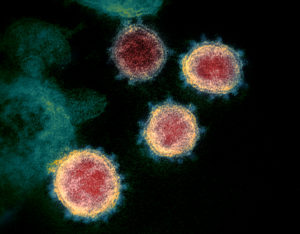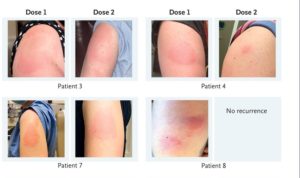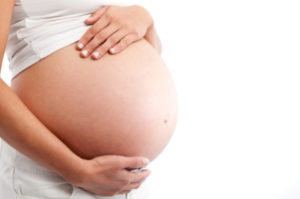 Many people somehow think that COVID-19 is just another flu virus and not that bad. Wrong! The deadly flu epidemic of 1918 killed an estimated 675,000 persons in the United States. But COVID-19 has already killed more than 690,000 persons - and these are the confirmed cases! It is now officially the deadliest disease event or pandemic in American history.
Many people somehow think that COVID-19 is just another flu virus and not that bad. Wrong! The deadly flu epidemic of 1918 killed an estimated 675,000 persons in the United States. But COVID-19 has already killed more than 690,000 persons - and these are the confirmed cases! It is now officially the deadliest disease event or pandemic in American history.
Currently more than 1900 persons are still dying daily in the United States - so the numbers are increasing rapidly.
It is thought that actual numbers of deaths are at least 10% higher (e.g., a person dies at home from the virus, but had never taken COVID-19 test when alive). Johns Hopkins University updates case and death numbers daily (see COVID-19 Dashboard), for both the US and the rest of the world.
Very soon the official number of deaths from COVID-19 will surpass 700,000! In just two short years! Some comparisons of events causing large numbers of deaths are: the death toll for Americans in the War Between the States (Civil War) was about 650,000, and about 405,000 for World War II. The HIV/AIDS virus has killed at least 700,000 people since the beginning of the epidemic in the 1960s - but this is over the course of 60 years.
Excerpts from Stat News: Covid-19 overtakes 1918 Spanish flu as deadliest disease in American history
The Covid-19 pandemic has become the deadliest disease event in American history, with a death toll surpassing that of the 1918 Spanish flu. ...continue reading "COVID-19 Is Now the Deadliest Pandemic in American History"

 Another reason to get more active - a new
Another reason to get more active - a new 

 There is much debate over whether pregnant women should get a COVID-19 vaccine. This is because studies of pregnant women receiving vaccinations have not been done, and so risks and possible harms (if any) are unknown. But what is known is that pregnant women are at higher risk for pregnancy complications if they get COVID-19 (e.g. increased risk of preterm labor and stillbirth).
There is much debate over whether pregnant women should get a COVID-19 vaccine. This is because studies of pregnant women receiving vaccinations have not been done, and so risks and possible harms (if any) are unknown. But what is known is that pregnant women are at higher risk for pregnancy complications if they get COVID-19 (e.g. increased risk of preterm labor and stillbirth).
